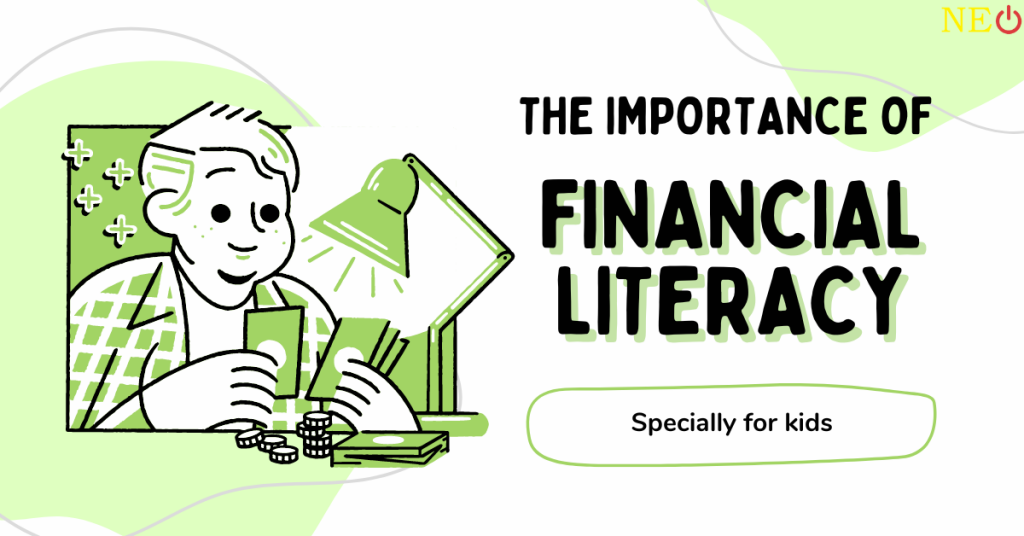RBI Fines Indian Banks: Reasons for ₹1.29 Crore Fines Against Banks
The Reserve Bank of India (RBI) fined ₹1.29 crore on three prominent banks: Kotak Mahindra Bank, IDFC First Bank, and Punjab National Bank. Examine Why?

In the dynamic and ever-changing world of today, financial literacy is more important than ever. Due to the complexity of financial institutions, rising debt levels, and uncertainties regarding economic stability, people need to be able to successfully navigate the financial landscape. At this point, financial literacy instruction in schools becomes crucial.
Financial literacy is the capacity to comprehend and efficiently handle many areas of one's personal money. It includes abilities like budgeting, saving, investing, credit awareness, and making sound financial decisions. Despite its importance, financial literacy education is routinely overlooked in many school curricula globally. However, the advantages of incorporating financial literacy into classrooms are numerous and far-reaching.
Table of contents [Show]
Personal finance management has grown in complexity in today's culture. Individuals encounter a variety of financial decisions throughout their lives, from understanding credit card conditions to determining investment possibilities. Without sufficient knowledge and skills, these decisions can have long-term consequences for people's financial well-being.
Furthermore, financial decisions have an impact on families and communities as well as individuals. Poor money management can result in debt accumulation, financial hardship, and even bankruptcy. According to research, financial stress is a major source of relationship troubles and can have a negative impact on mental health.
Young adults, in particular, are vulnerable to financial difficulties as they move toward independence. Without proper advice and instruction, individuals may become victims of predatory lending tactics, collect large amounts of debt, and struggle to reach financial security.
Integrating financial literacy education into school curricula has various advantages. First and foremost, it enables students to make informed financial decisions. By providing students with the required knowledge and abilities, they will be able to manage financial issues with confidence and responsibility.
Furthermore, financial literacy education promotes prudent financial conduct from an early age. Students build healthy financial habits that will last a lifetime when budgeting, saving, and investing principles are introduced early on. These practices assist not only individuals, but also the entire economic well-being of society.
Furthermore, financial literacy education helps pupils prepare for real-world issues and obligations. As they enter adulthood, they will face a variety of financial milestones, including managing school loans, purchasing a home, and budgeting for retirement. They will be better able to face these issues and make sensible financial decisions if they receive comprehensive financial education.
Despite the evident benefits of financial literacy education, a number of hurdles prevent its widespread implementation in schools. One significant difficulty is a lack of consistent curriculum and teacher training. Many teachers may not feel fully equipped to teach financial literacy topics, resulting in varied education across schools.
Furthermore, limited time and resources in school schedules create challenges to incorporating financial literacy into existing curricula. With competing academic responsibilities, educators may struggle to find enough time for comprehensive financial instruction.
Furthermore, cultural and sociological barriers prevent frank discussion of finances. In certain cultures, financial topics are considered taboo or reserved for adults, stifling efforts to encourage financial literacy among youth.
Despite these limitations, schools can use a variety of techniques to effectively incorporate financial literacy into their curricula. One strategy is to integrate financial education into a variety of topics, including arithmetic, economics, and social studies. By incorporating financial concepts into existing curricula, students can see the practical implications of financial literacy in a variety of settings.
Furthermore, using interactive and practical learning methods can help students engage and grasp financial ideas. Budgeting simulations, investing games, and real-world case studies can help students connect with financial education and enjoy it more.
Furthermore, schools can work with financial firms and experts to gain resources and support for financial literacy projects. Guest speakers, conferences, and internet resources can enhance classroom education by providing students with real-world examples of financial concepts.
Several schools and districts have successfully introduced financial literacy programs, yielding encouraging results. For example, a Texas school district included financial literacy in its middle school curriculum, which increased students' comprehension of budgeting and saving concepts.
Similarly, a high school in California collaborated with a local credit union to provide financial awareness workshops and services to pupils. As a result, students reported increased confidence in managing their finances and making sound financial decisions.
These success stories demonstrate the value of financial literacy teaching in schools and the good influence it can have on students' lives.
Parents and communities play an important role in developing financial literacy, in addition to schools. Parents can promote financial education at home by addressing financial matters with their children, involve them in household budgeting, and setting a good example for responsible financial behavior.
Furthermore, communities can help promote financial literacy by providing lectures, seminars, and resources to schools and families. Local companies, financial institutions, and non-profit groups can work with schools to provide important financial education opportunities.
Financial literacy education is critical for preparing future generations with the knowledge and skills required to succeed in an increasingly complicated financial world. Integrating financial literacy into school curricula allows educators to provide kids with the tools they need to make educated financial decisions, develop responsible financial behaviors, and prepare them for adulthood's challenges.
Despite problems in implementation, schools can use a variety of techniques to effectively include financial literacy into their curricula. Furthermore, the involvement of parents, communities, and external stakeholders is critical in promoting and strengthening financial literacy initiatives.
Finally, investing in financial literacy education ensures people' and society's future financial well-being. By addressing financial literacy in schools, we can help students attain financial independence, stability, and success.
The Reserve Bank of India (RBI) fined ₹1.29 crore on three prominent banks: Kotak Mahindra Bank, IDFC First Bank, and Punjab National Bank. Examine Why?
GDP growth slows down to 5.4% in the second quarter, putting more pressure on the RBI to lower interest rates.
The Indian stock market is showing a flat start today. The Gift Nifty was around 24,540, which is just 2 points higher than the last closing value of the Nifty futures.

